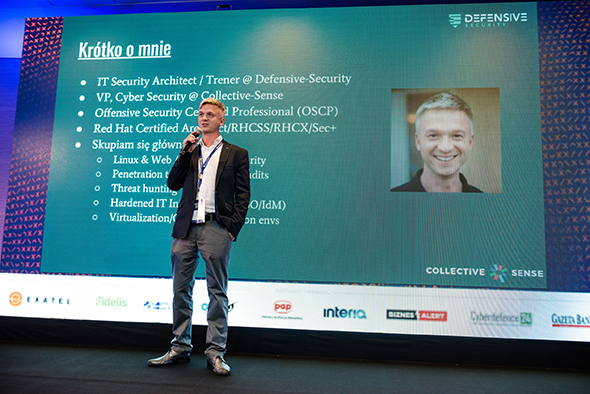Product Overview
EDRmetry Pulse is a user-friendly, automated tool for simulating adversary behavior on corporate Linux networks. It enables cybersecurity professionals to test Linux telemetry collection, evaluate detection capabilities, verify security controls, and enhance Linux incident response procedures. With a minimal learning curve and time-saving features, EDRmetry Pulse offers the quickest way to understand the true status of detection coverage and EDR/XDR/SIEM threat alerting in a continuous and automated format. It is the only Breach and Attack Simulation platform available on the market dedicated exclusively to Linux environments and containing advanced and low-level offensive tests.
EDRmetry Pulse, built on the EDRmetry Matrix, automates the execution of over 300 offensive techniques (TTPs) derived from real-world Linux attack scenarios. It offers a comprehensive Linux offensive catalog, enabling users to launch individual “EDRmetries” or chain them together for advanced testing.
Core Features
- Single and chained execution:
- Run a single test one by one, learn how it works and what detection artifacts it leaves behind, or build a custom, full attack scenario by combining and running multiple tests at once
- Customizable views:
- All security tests are grouped by tactic, helping you navigate more easily
- Parametrization:
- Every security test definition is based on global variables that you can easily adapt to your needs
- Manual Interaction with sessions:
- Thanks to the session support of individual tests, it is possible to expand the execution context of the performed steps manually
- Scheduled tests:
- Run ongoing tests at specific time intervals, as it is key to staying ahead of threats. Scheduled execution also allows for finding differences in the operational behavior of a given version of the EDR/SIEM engine, e.g., after an update
- Teams and user roles:
- The EDRmetry Pulse web interface allows for creating dedicated user groups in the form of teams, taking into account an assigned set of permissions such as guest, task runner, manager, and admin
- Reporting and statutes:
- Track the execution status, date, and history of executed tests in detail
- Updates:
- New EDRmetry test definitions delivered on an ongoing basis as part of the service through a dedicated git repository (by default, every 30 days)
What makes EDRmetry different from others?
- Full Range of Advanced Techniques → Close the gaps in your Linux Security posture by emulating Linux offensive techniques faster and easier than ever before, allowing even less experienced users to understand advanced Linux security concepts
- Ongoing Threat Intelligence Research → A centralized, continuously updated knowledge base on the Linux threat ecosystem in auto-executable format, with Linux TTPs mapped to the MITRE Attack Framework.
- Vulnerable services → True exploitation tests of included vulnerable network services and security misconfigurations to simulate attack behavior contextually
- Offensive TTPs as Code → Full insight into the security tests source code, defined commands, and snippets of code, with the possibility of easy customization
- Code verification → All source codes and open source projects used within the product have been verified for potential malware infections, allowing for a safe execution in your environment
- Session Operations → Engage with established C2 or reverse shell sessions, extend the execution contexts, observe the real-time output and execution status in an authentic shell environment via EDR-ID session tracking.
- Agentless → Support for on-premise and cloud Linux environments by easy deployment and fast integration via SSH communication channel
- Recognition → The proposed method and offensive content have been consistently evaluated as highly valuable during professional services and training sessions at prestigious cybersecurity conferences, such as Black Hat USA/Singapore, X33FCON, HITB, and also during private training for the biggest companies all over the world.
Use Cases→ Better Blue by playing Red
- Understand the Linux threat ecosystem and the corresponding offensive techniques in the simplest, automated way, reducing boring, manual effort
- Proactively validate whether the chosen Runtime Security or EDR/XDR engine generates logs, detections, and alerts when a specific technique is executed.
- Identify SIEM blind spots and enhance detection rules, telemetry pipelines, and data source correlations by pinpointing the areas targeted by threat actors.
- Improve your Incident Response capabilities by using EDRmetry Pulse as a basis for internal purple team exercises (red vs blue team)
- Automate and chain offensive techniques to simulate real-world Linux attack scenarios in an active, ongoing process as a part of a detection engineering effort
- Focus on detection engineering and increase your threat hunting capabilities while maintaining the active defense approach
- Find corresponding forensics TTPs artifacts and know better Linux internals
- Find criteria and features to consider when evaluating a Linux EDR platform, and be able to ask Linux EDR/SIEM vendors the right questions about their products
Target Audience
EDRmetry Pulse is tailored for Cyber Security Professionals, with maximum value for:
- SIEM/EDR Linux Specialists
- Detection Engineers
- SOC Team Members
- Blue Team Defenders
- Purple Team Operators
- Red Team Operators
- SecOps / DevSecOps Engineers
- Threat Hunters
- General Cyber Security Analysts
- Linux Experts
- EDR/Runtime Security Vendors
EDRmetry Pulse is your ultimate companion in mastering the Linux threat landscape through offensive security automation. Designed with defenders in mind, it bridges the gap between red and blue teams by emulating real-world Linux attacks in a controlled, systematic, and intelligent way—so you can stop threats before they escalate.
FAQ
1. What is EDRmetry?
EDRmetry is an advanced tool designed to evaluate and enhance your Linux security system posture, with a specific focus on assessing EDR/XDR/SIEM detection capabilities. It serves as a comprehensive, vendor-agnostic playbook for offensive Linux testing and operations, providing cybersecurity professionals with the means to thoroughly test and improve their Linux-based security infrastructure.
2. What problem does EDRmetry solve?
EDRmetry addresses several critical challenges in the cybersecurity landscape:
- The increasing complexity of Linux-based attacks and the need for specialized testing tools
- The difficulty in evaluating the effectiveness of EDR/XDR solutions in Linux environments
- The knowledge gap in understanding and mitigating Linux-specific security threats
- The need for practical, hands-on tools to improve SOC capabilities and incident response in Linux ecosystems
3. How does EDRmetry differ from other security testing tools?
EDRmetry stands out in several ways:
- Linux Focus: Unlike many tools that primarily target Windows environments, EDRmetry is specifically designed for Linux systems.
- Comprehensive Knowledge Base: It provides a centralized repository of Linux offensive techniques with ready-to-use code snippets.
- Practical Approach: EDRmetry emphasizes real-world attack scenarios and techniques observed in actual APT activities.
- Modularity: The tool allows for creating full attack chains, useful in threat emulation and forensics exercises.
- Educational Component: It includes a built-in learning portal about Linux EDR features and market-leading solutions.
4. What types of tests can be performed with EDRmetry?
EDRmetry enables a wide range of security tests, including but not limited to:
- Full kill chain testing: From initial access to command and control (C2) and data exfiltration
- EDR/XDR efficacy evaluation: Testing detection capabilities against various attack techniques
- SIEM integration testing: Assessing how security events are captured and processed
- Custom attack chain creation: Building and executing tailored attack scenarios
- Network-oriented security checks: Profiling network traffic and testing NIDS/NIPS/Corporate Proxy and NG-Firewalls
5. How does EDRmetry handle different EDR/XDR solutions?
EDRmetry is designed to be vendor-agnostic, allowing you to:
- Test multiple EDR/XDR solutions using the same set of techniques
- Compare detection capabilities across different products
- Identify strengths and weaknesses in each solution's approach to Linux security
- Fine-tune and optimize your chosen EDR/XDR solution based on test results
6. Can EDRmetry integrate with other security tools and frameworks?
Yes, EDRmetry is designed with flexibility in mind:
- It can augment tools like Mitre CALDERA or Atomic Red Team with Linux-specific techniques
- The modular approach allows for integration with various security testing frameworks
- Future plans include potential integration with Caldera / OpenBAS type engines for quantitative metrics
7. What level of expertise is required to use EDRmetry effectively?
EDRmetry is designed to be accessible to a range of users:
- For less experienced users: Step-by-step instructions and copy-paste code snippets make it easy to get started
- For advanced users: Customization options and the ability to create complex attack chains cater to more sophisticated needs
- Built-in educational resources help users of all levels improve their Linux security knowledge
8. How is EDRmetry deployed and maintained?
- Deployment: EDRmetry provides VM images prepared for attack emulation, which can be installed in your environment or accessed through a PurpleLabs Cyber Range subscription
- Updates: New techniques are added monthly, reflecting the latest trends in Linux-based attacks and APT activities
- Customization: Users have admin privileges to add or modify playbook definitions, allowing for environment-specific adaptations
9. How does EDRmetry ensure the safety and containment of malicious code execution?
- Controlled Environment: The provided VM images are designed for safe testing without risking production systems
- Code Validation: All security checks and source codes are validated against harmful behavior
- Best Practices: The tool includes guidelines for safe execution and containment of potentially malicious code
10. How does EDRmetry contribute to the overall cybersecurity strategy?
- Proactive Defense: Enables organizations to stay ahead of potential threats by understanding and testing against the latest attack techniques
- Informed Decision Making: Provides concrete data to support EDR/XDR selection and optimization
- Skill Development: Enhances the capabilities of internal security teams through practical experience
- Compliance Support: Helps in demonstrating due diligence in security testing and improvement efforts
- Cost Efficiency: Reduces the need for multiple tools or extensive external consultations for Linux security testing
11. What specific benefits does EDRmetry offer to CISOs and Security Directors?
- Comprehensive Visibility: Gain a clear understanding of your Linux environment's security posture
- Resource Optimization: Make informed decisions about security investments based on actual performance data
- Risk Management: Identify and address security gaps before they can be exploited
- Team Empowerment: Provide your security team with advanced tools to enhance their skills and effectiveness
- Vendor Management: Improve negotiations with EDR/XDR vendors by having concrete data on product performance
12. How does EDRmetry support compliance and audit requirements?
- Evidence Generation: Creates detailed logs of security tests and their outcomes
- Gap Analysis: Helps identify areas where security controls may be insufficient for compliance requirements
- Continuous Improvement: Supports ongoing security posture assessment and enhancement
- Documentation: Provides materials that can be used to demonstrate security testing efforts to auditors
13. How can organizations measure the ROI of implementing EDRmetry?
- Detection Improvement: Quantify the increase in threat detection rates
- False Positive Reduction: Measure the decrease in false alarms after optimizing EDR/XDR configurations
- Incident Response Efficiency: Track improvements in response times and effectiveness
- Training Cost Reduction: Calculate savings from in-house skill development vs. external training
- Breach Prevention: Estimate potential cost savings from preventing security breaches
14. What performance metrics can be tracked using EDRmetry?
- Detection Coverage: Percentage of known attack techniques successfully detected
- Time to Detection: Average time taken to identify malicious activities
- False Positive Rate: Number of false alarms generated during testing
- Evasion Success Rate: Percentage of techniques that successfully evade detection
- System Impact: Performance impact of security solutions under various attack scenarios
15. What kind of support is available for EDRmetry users?
- Documentation: Comprehensive user guides and technical documentation
- Regular Updates: Monthly additions of new attack techniques and tool improvements
- Educational Resources: Access to the built-in learning portal
- Professional Services: Option for advanced consulting services from Defensive Security experts
16. Does EDRmetry offer professional services or training?
Yes, Defensive Security provides several additional services:
- Custom Deployment Assistance: Help with setting up EDRmetry in your specific environment
- Advanced Consulting: Expert guidance on interpreting results and improving security posture
- Tailored Training: Customized workshops on Linux security and EDR/XDR optimization
- Threat Emulation: Assistance in creating and executing advanced attack scenarios
- Continuous Support: Ongoing expert support for evolving security needs
17. What future developments are planned for EDRmetry?
- Cloud Security: Expanded focus on cloud-native Linux environments and container security
- AI/ML Integration: Exploration of machine learning for predictive security testing
- BAS Integration
18. How does EDRmetry adapt to the evolving threat landscape?
- Continuous Research: Ongoing analysis of emerging Linux-based threats and attack techniques
- Community Input: Incorporation of insights from the cybersecurity community
- APT Tracking: Regular updates based on observed APT group activities
- Flexible Architecture: Modular design allowing for rapid incorporation of new testing methodologies
- Feedback Loop: Continuous improvement based on user experiences and real-world applications













